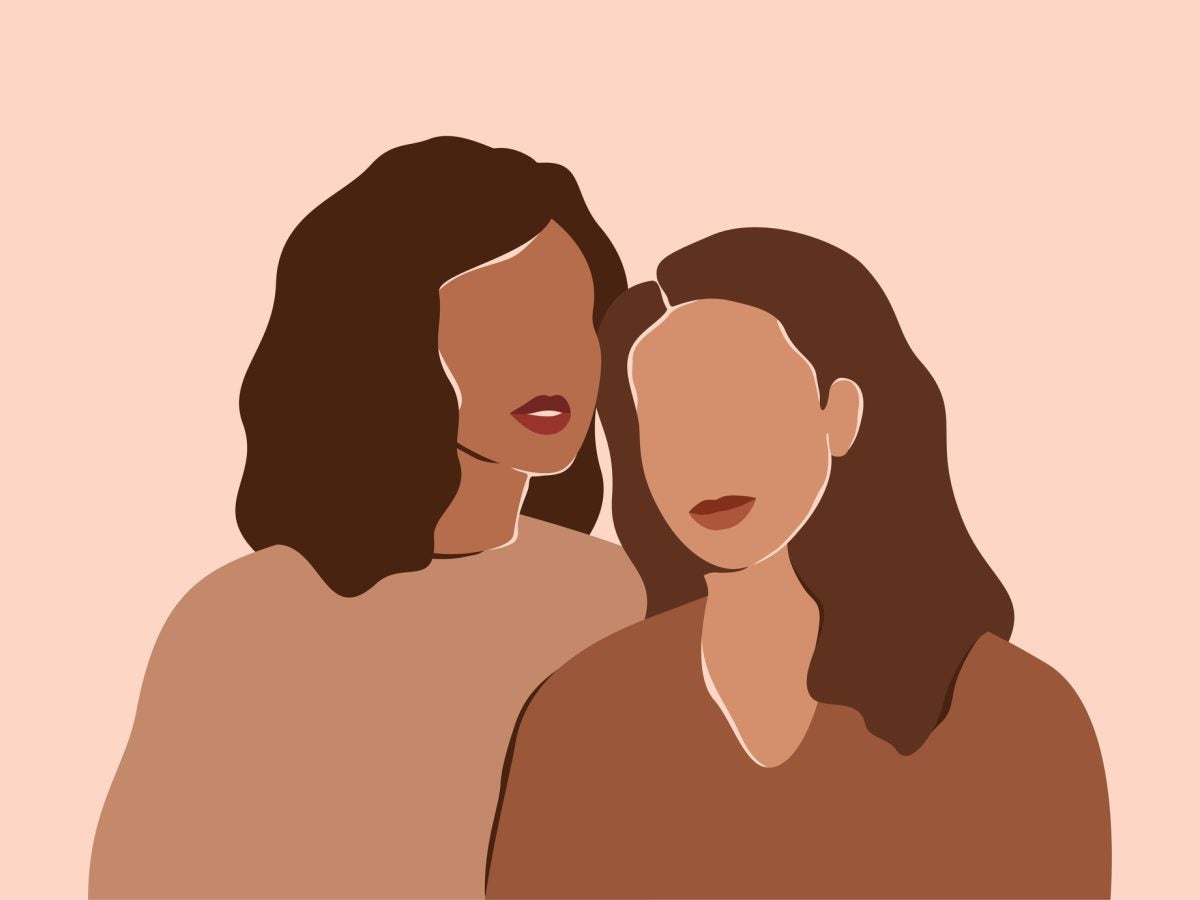
Growing up, shrines comprised of prayer candles and D.I.Y. photo collages were a sobering accessory in my neighborhood. Memorials of the fallen–mothers, sons and those in between–greeted me frequently in the Bronx. I’d take in the touching tributes, pay my respects, and keep it moving.
February 2020 was different.
As the COVID-19 pandemic loomed over New York City, I assembled blue and white candles in the form of a “J,” the first initial of my best friend’s name, in front of my childhood building. Her favorite albums, Summer Walker’s love-soaked Over It and Pop Smoke’s boastful Meet The Woo 2, played on a loop as friends and family gathered to honor another life gone too soon. The candles would eventually burn out, and another collection of photos, tears and memories would take its place, but a 20+ year friendship that defined my girlhood was entering its next phase.
In our youth, Janay and I bonded over boy bands, batted lashes at the boys in Skate Key (where we didn’t skate) and visualized matching McMansions in the suburbs far away from the metal lobby doors of public housing. We had so much in common but were different enough for people to be surprised we were friends. As we got older, Janay rightfully embraced her fly girl status with unrelenting confidence, sleek as her Prada sneakers, while I stifled through hand-me-downs and bottles of Fantasia hair spray for my frizzy curls. We faced plenty of battles together before teenage angst trailed through our path but Janay’s most considerable feat was revealing to me her long-fought battle with sickle cell disease, also known as sickle cell anemia.
The rare blood disease impacts nearly a million Americans and one out of every 365 Black births. According to the Centers for Disease Control and Prevention, SCD affects the protein in red blood cells carrying oxygen from the lungs throughout the body. The abnormal “sickle-shaped” cells clog small blood vessels causing acute chest syndrome, a less than fabulous immune system and unfathomable pain. During that first hospital visit, Janay explained her blood transfusions and the intricacies of her condition to me. We might’ve been only 13 years old but my good sis was giving her best Doogie Howser, M.D., exchanging information with her mom while simultaneously catching up with her studies. At that time, her biggest crisis wasn’t the disbandment of B2K like it was for other girls our age, but rather, bodily pain doctors could only treat with a heavy hand of opioids.
While the CDC boasts that more than 95% of newborns with SCD live to be adults, medical advocates have pointed out how severe cases may tote a life expectancy of 45 years old. Since the first described case of sickle cell disease nearly a century ago, the condition has been gravely underfunded, my guess being because it mainly affects those of African descent. Despite medical inequalities against people of color, I didn’t see another statistic in that hospital bed, but my soul sister, eager to heal and ready for her next challenge.
Through graduations, moves across the country and first loves, my relationship in girlhood with Janay was the most rooted I’ve ever known. She accepted me when I allowed my fears and insecurities to talk me into playing it safe. Our self-love lessons kicked off as time moved us away from anytime minutes on Razors to unlimited data on iPhones. Her quest to enjoy life to the fullest was literal, even as her transition from pediatric care to the adult SCD was challenging to handle.
In a study from the National Library of Medicine regarding the transition from pediatric to adult providers for the disease, systemic failures, from insurance coverage to lack of patient information shared in the process, have hindered beneficial changes to adult care. Elsewhere, treatments for SCD have been complicated as well. In 1998, the drug Hydroxyurea, a cancer therapy holding up the whole shape of blood cells, hit the lone market. Today, there are four approved drugs for SCD treatment and nearly 30 similar drugs in the realm of gene therapy are in human trials with million-dollar price tags. While there’s a silver lining in the future of SCD treatment, it’s often inaccessible for patients (most receiving coverage through Medicare and Medicaid programs) while offering lucrative rewards for pharmaceutical companies.
Advancements in the goal to cure the disease eclipsed Janay’s passing (due to the complications of her condition), but deep down, I knew she was free of the pain that got in the way of her peace. Such tranquility is a want and a need not offered to Black girls, especially those facing medical setbacks. Amid the healing journey I would go on following her loss, I was reminded how important it is for us to soothe and nurture the relationships that challenge and encourage us to be the best version of ourselves. My soul sister taught me to finally let down my proverbial wall and trust the light I bring into the world. It’s gone on to cultivate other spaces in my life and prepare for what’s next.
That relationship continues to shape the woman I’ve become. It’s opened my eyes to the need for a more fair and inclusive treatment for SCD. It’s also shown me the power and endurance of true friendship. While Janay is gone, our sisterhood, her influence, remains.